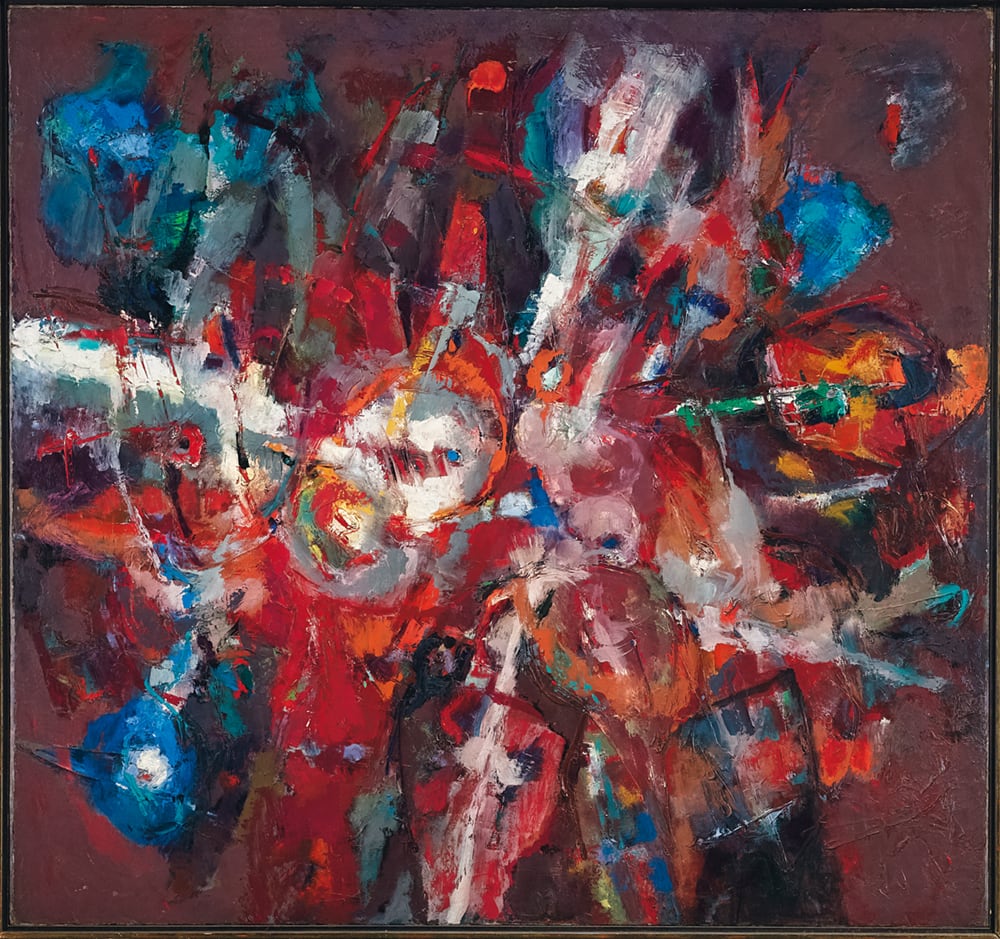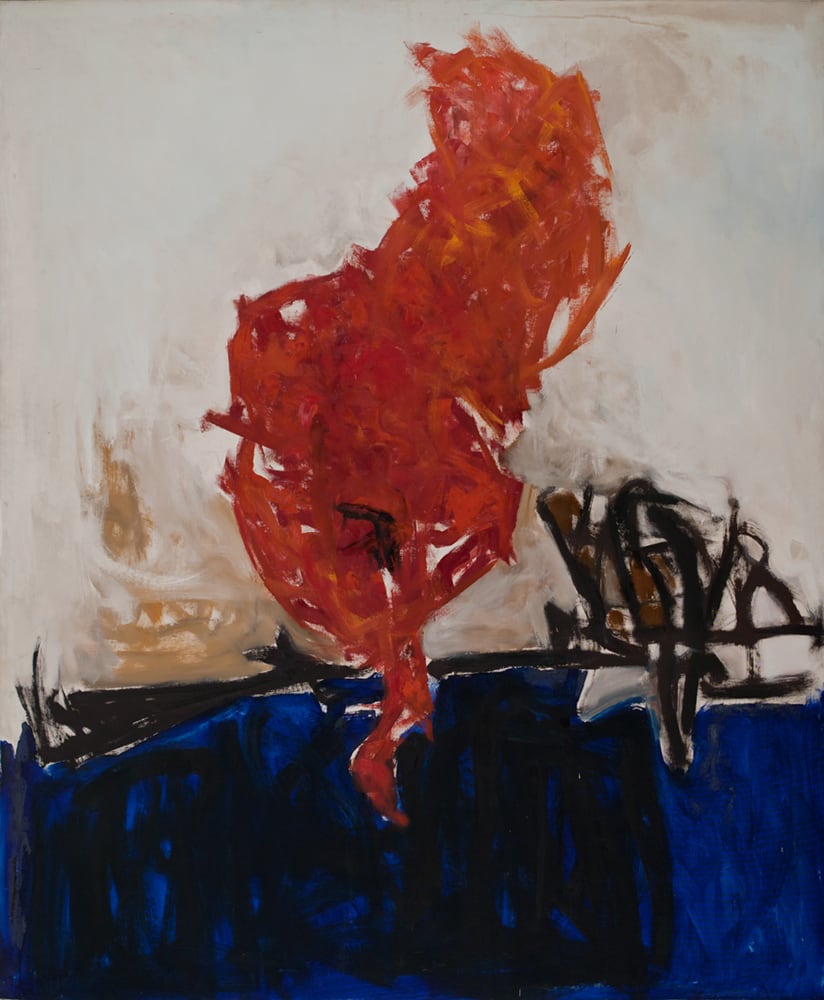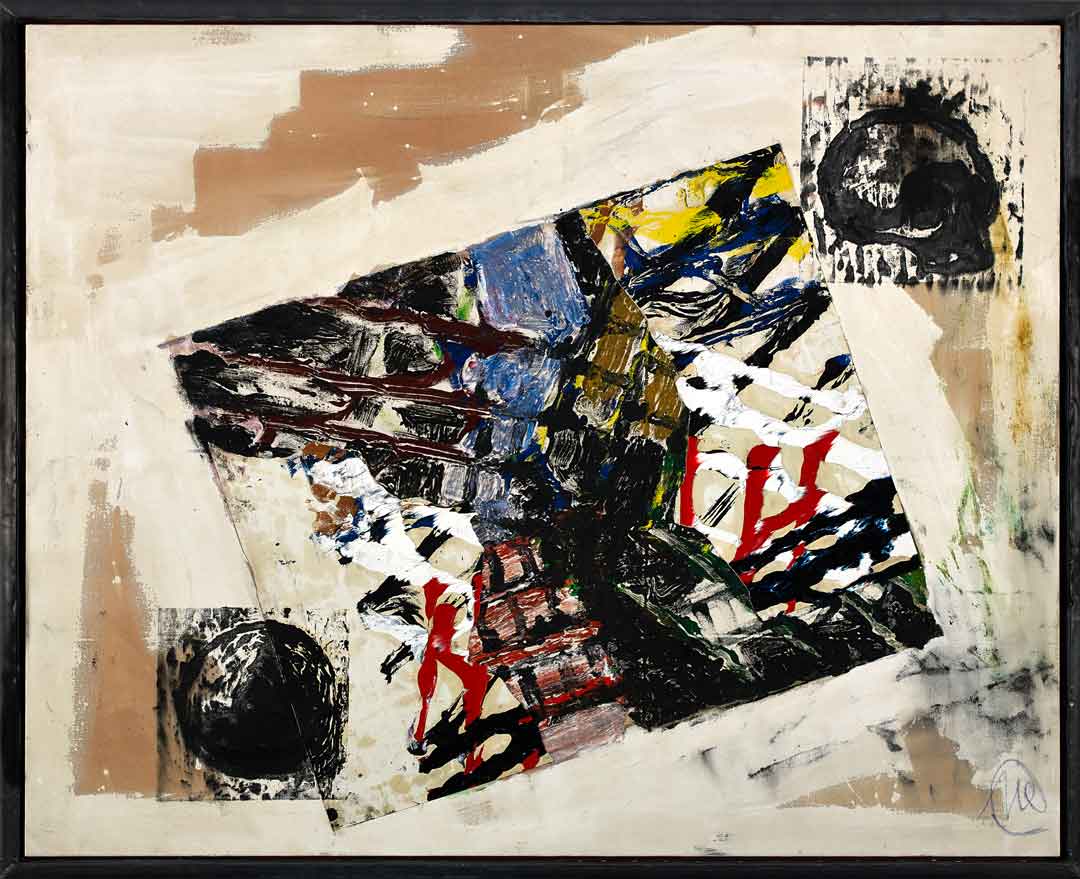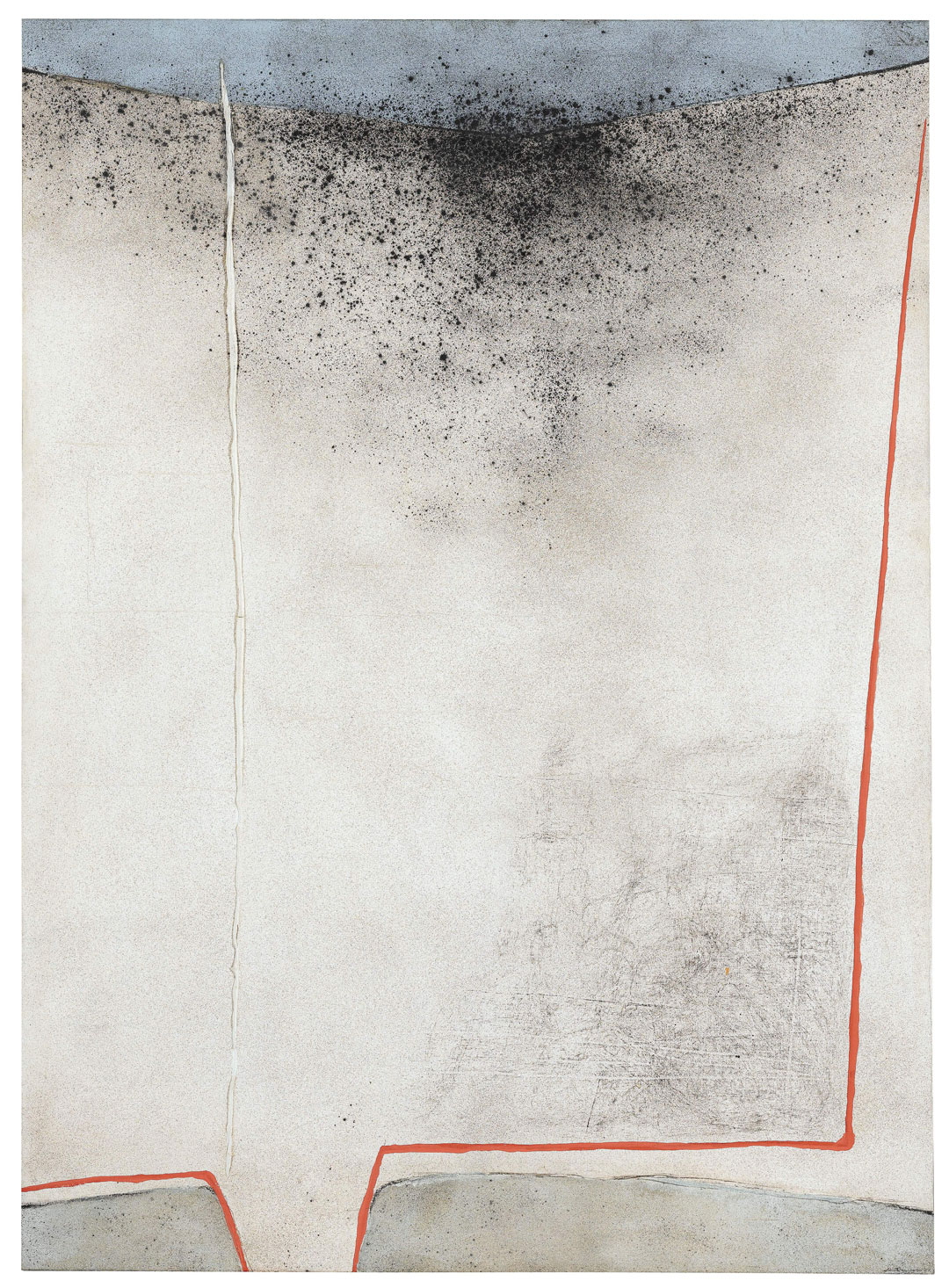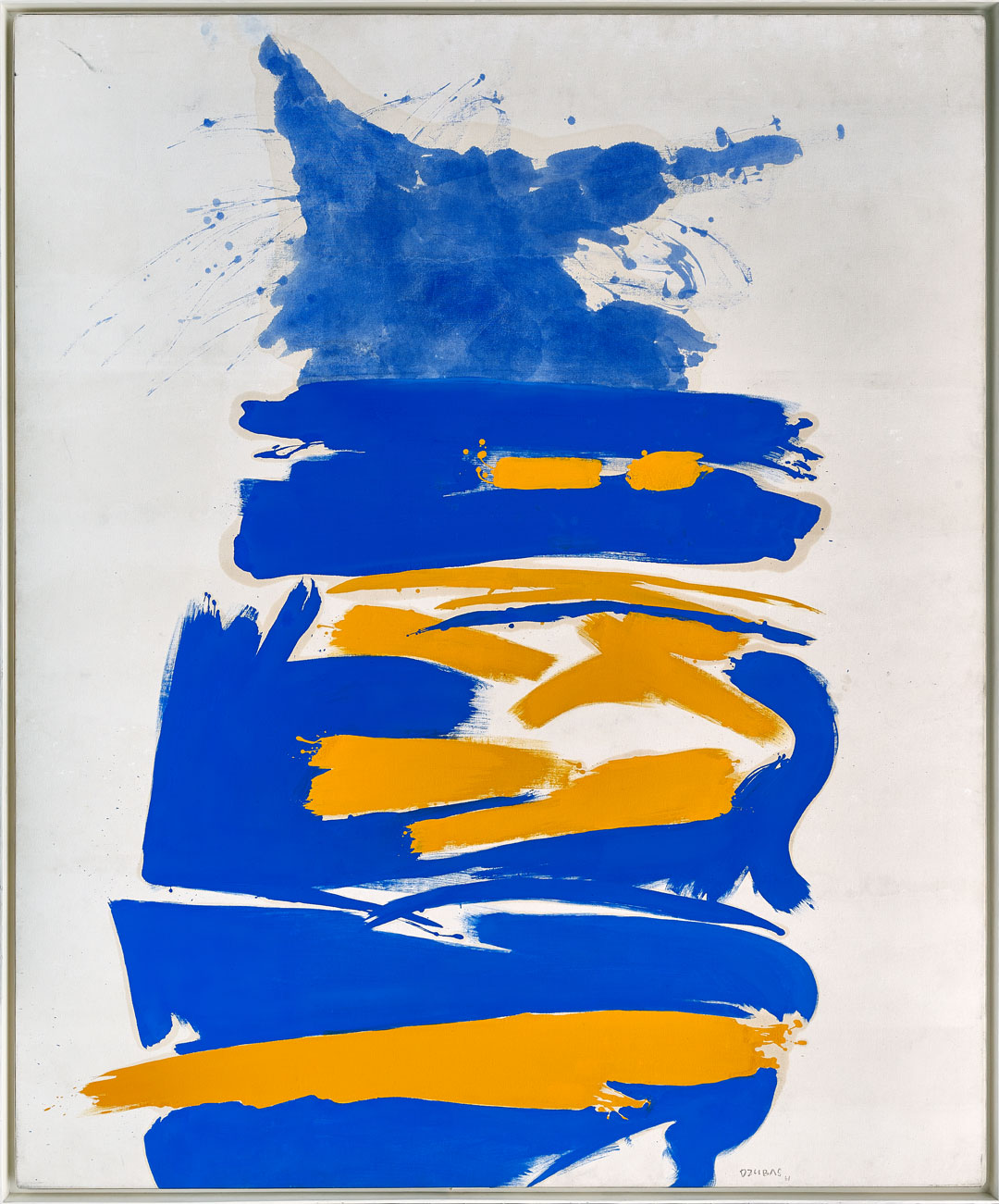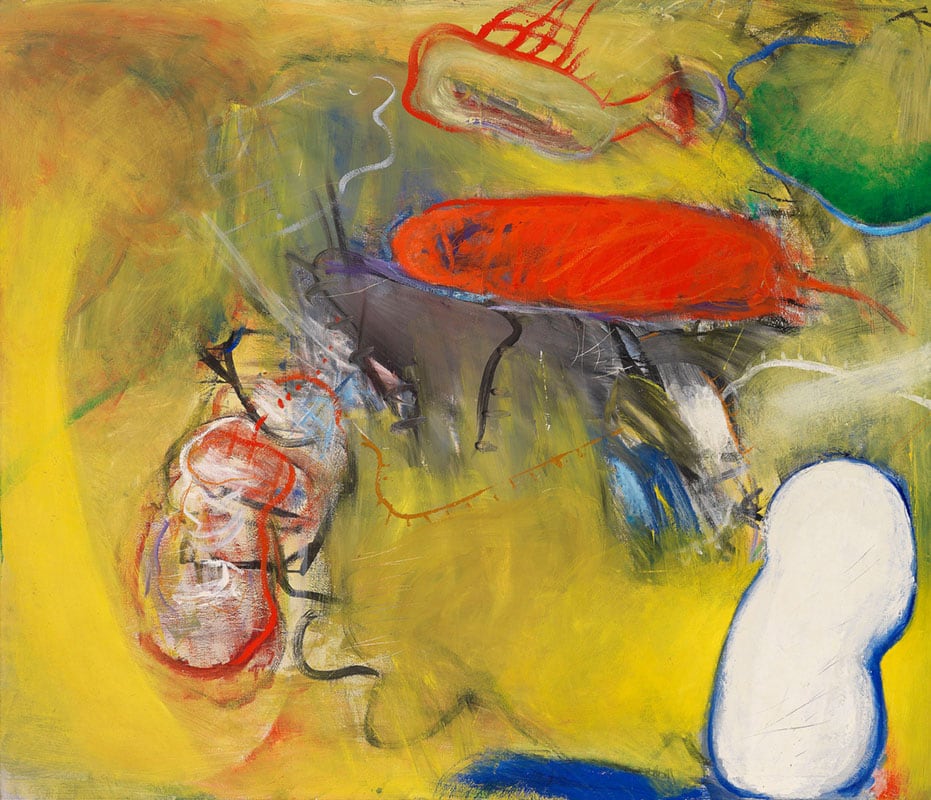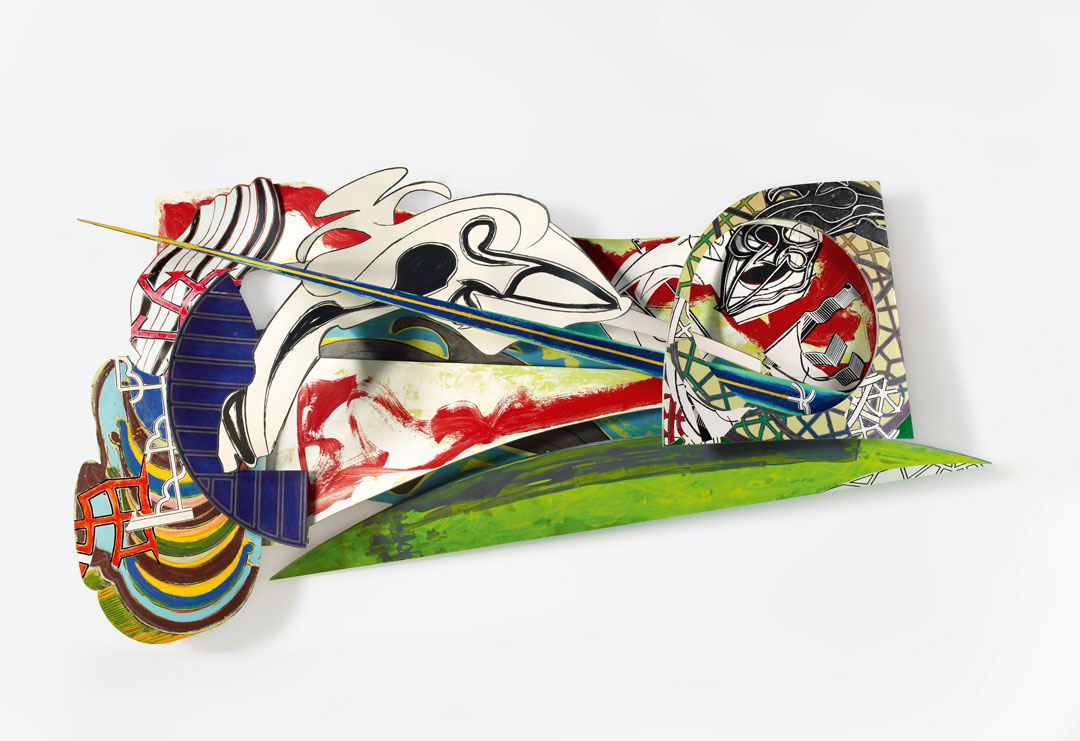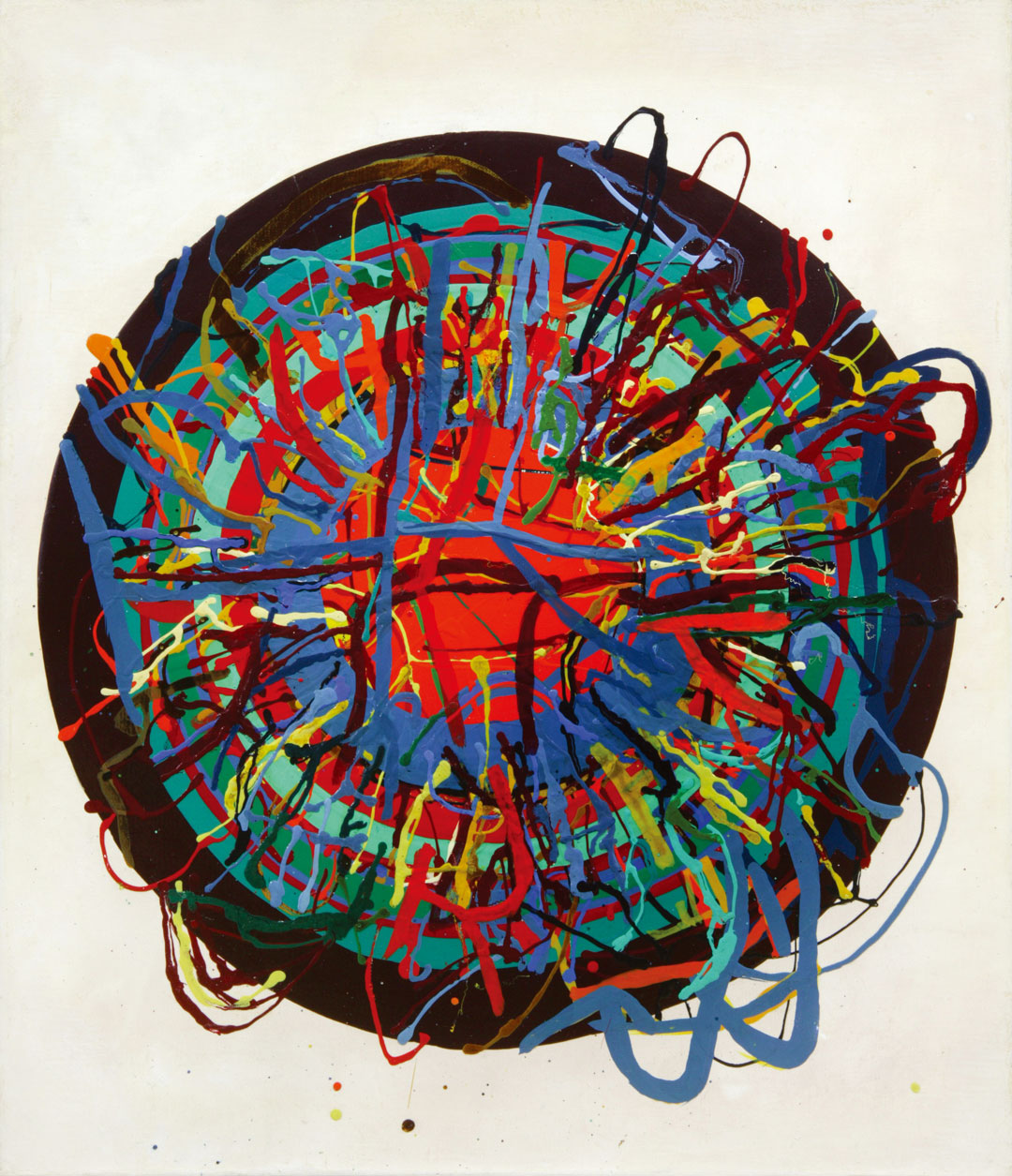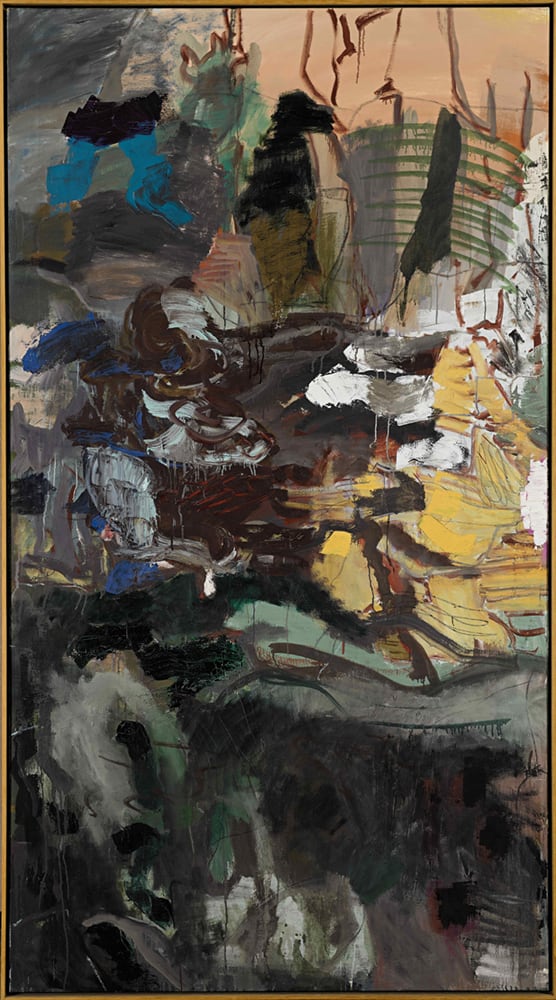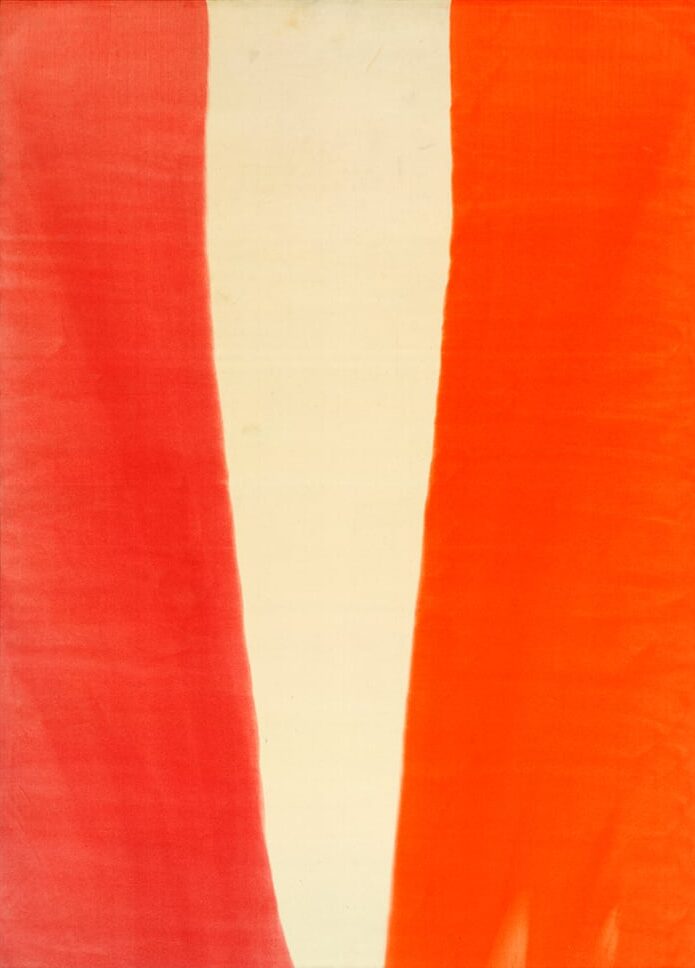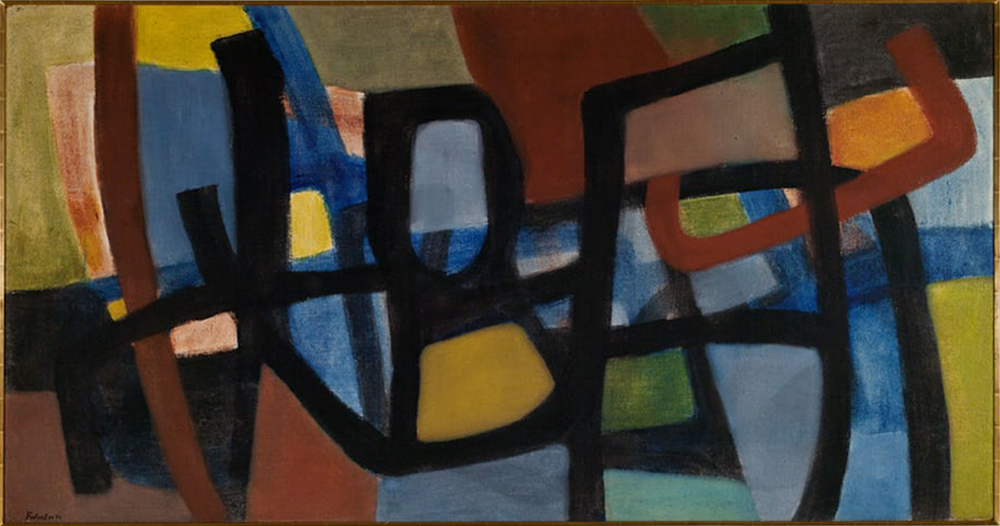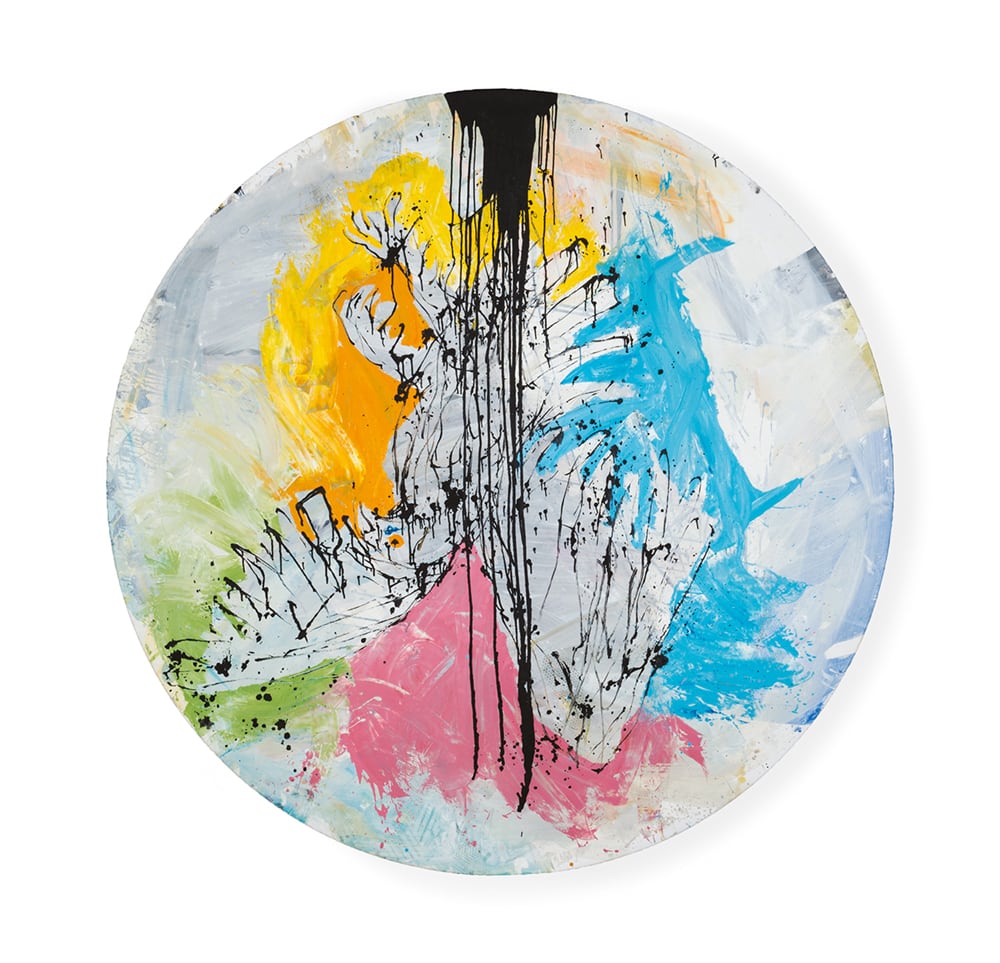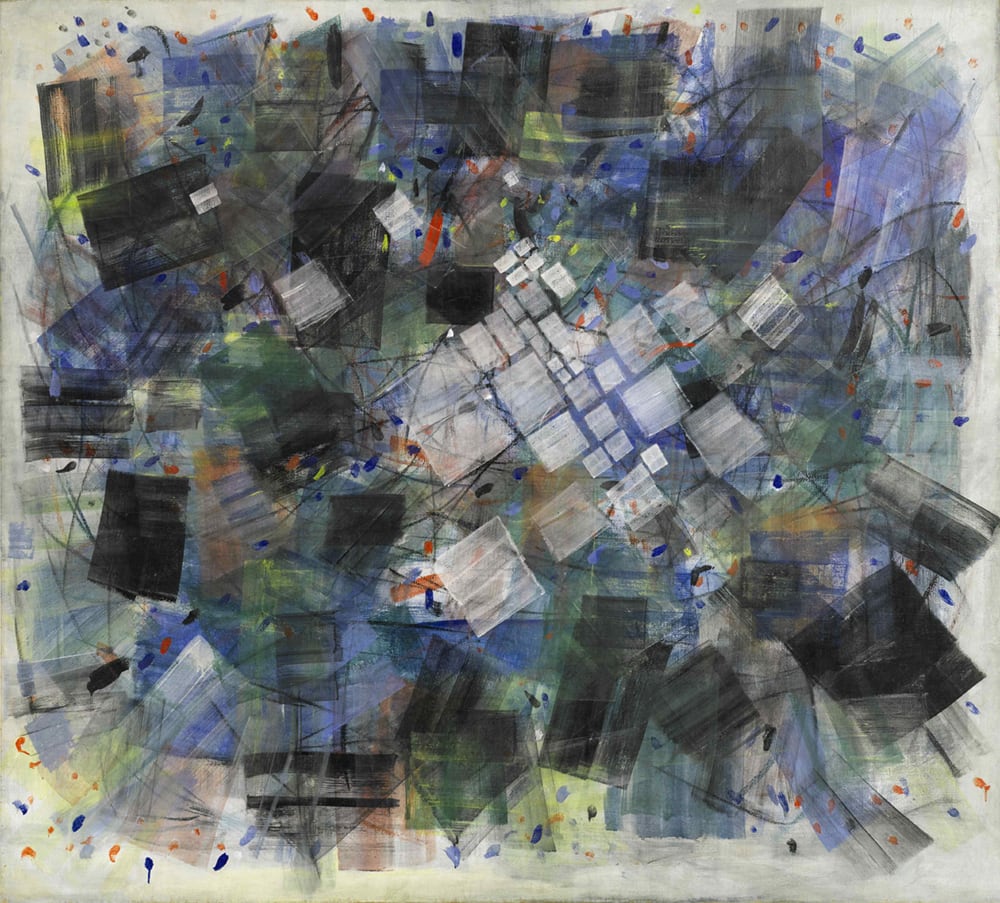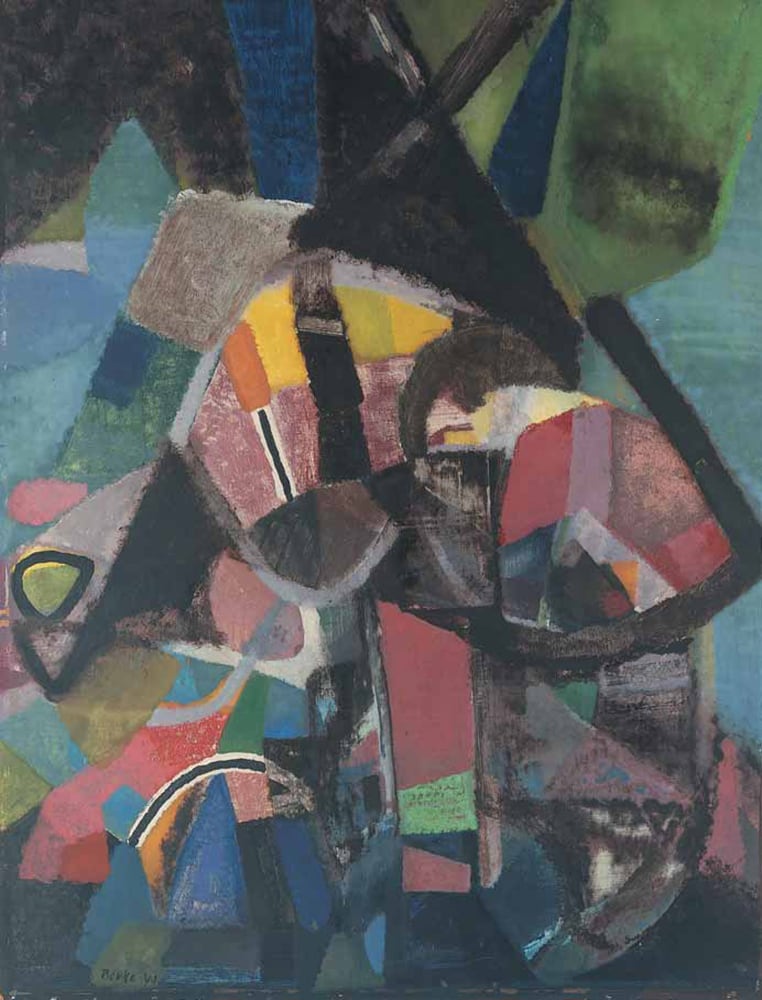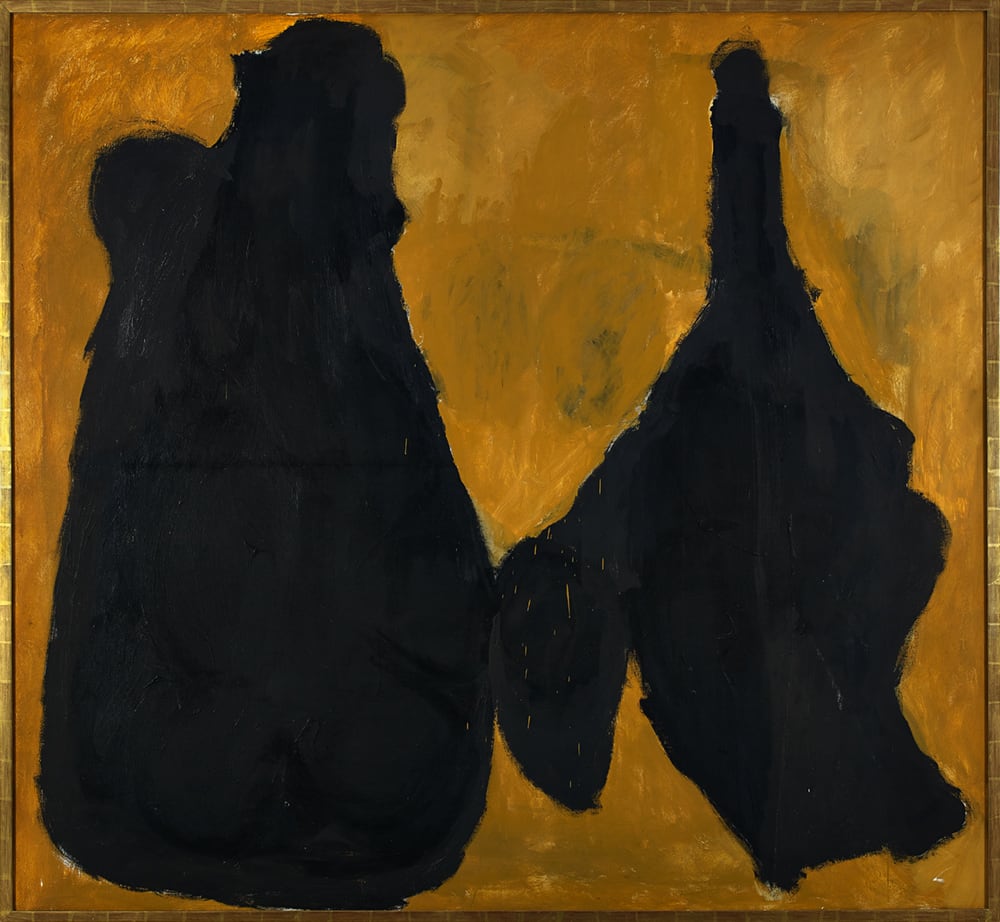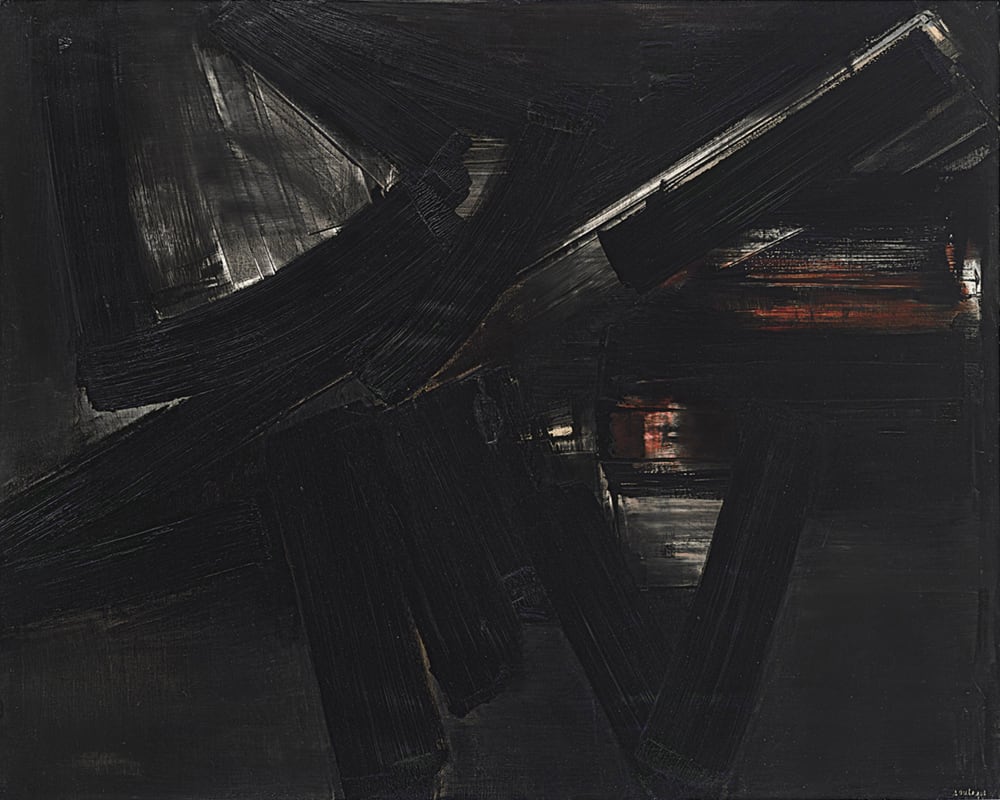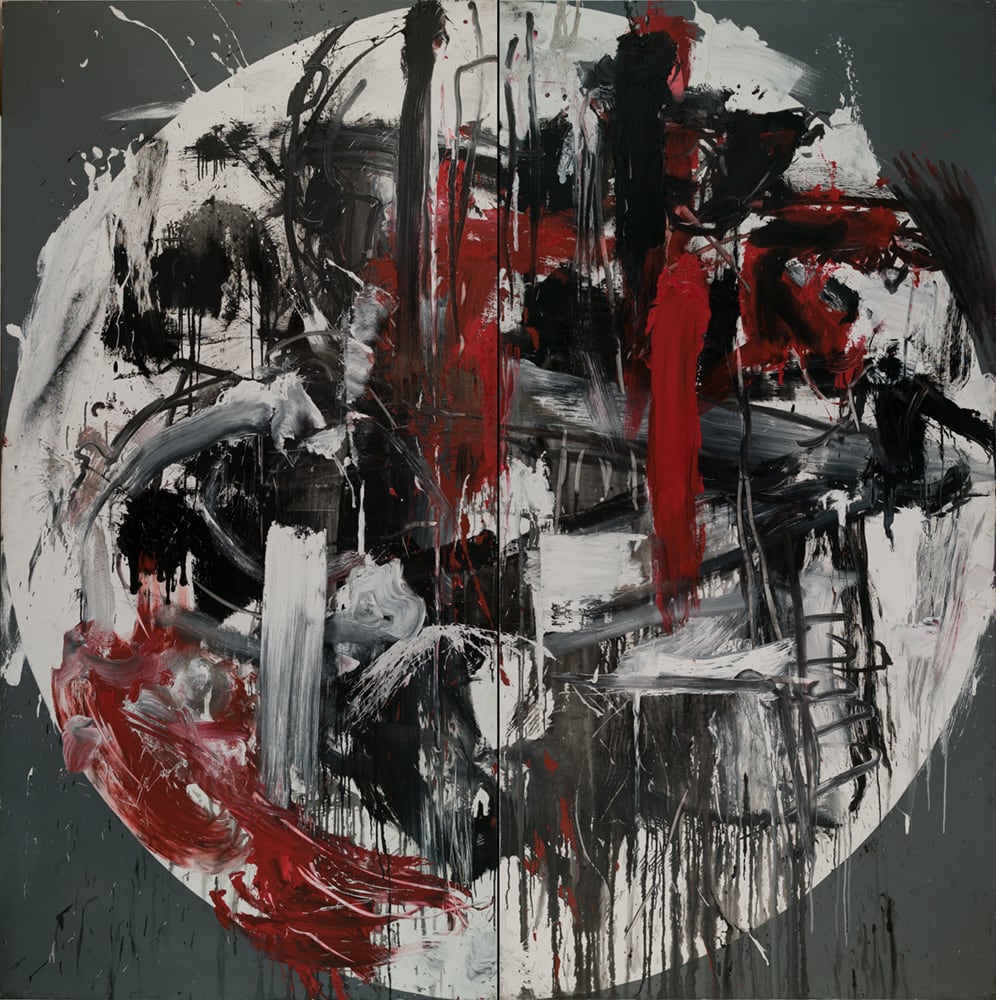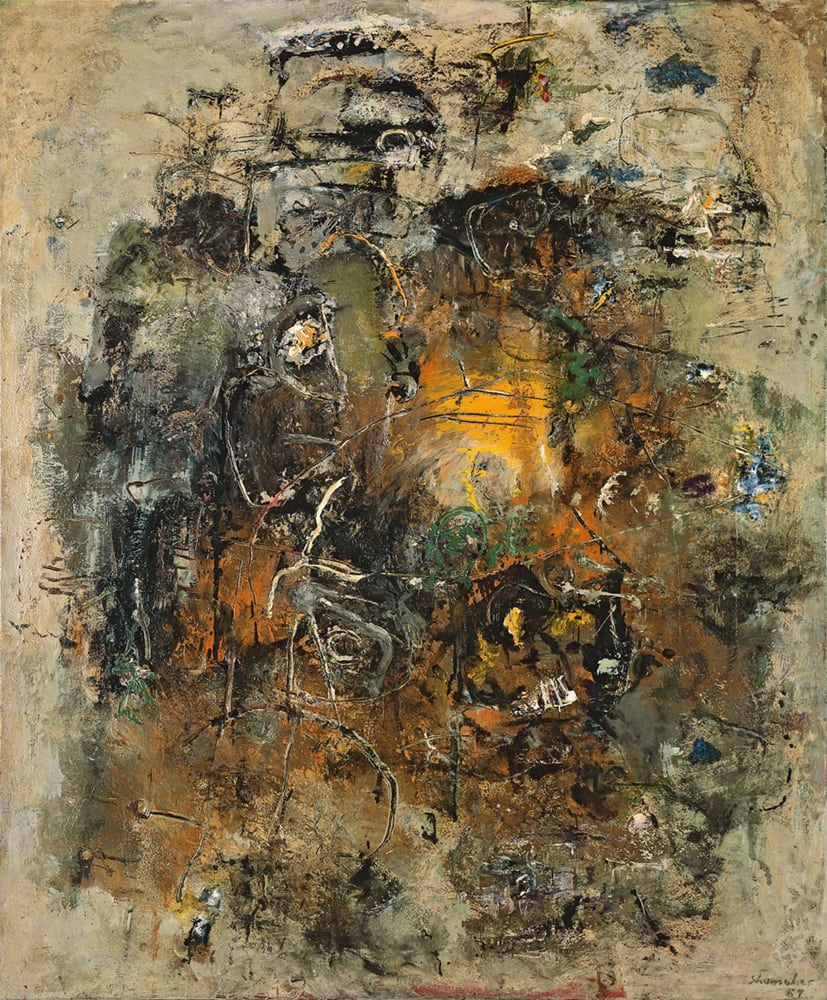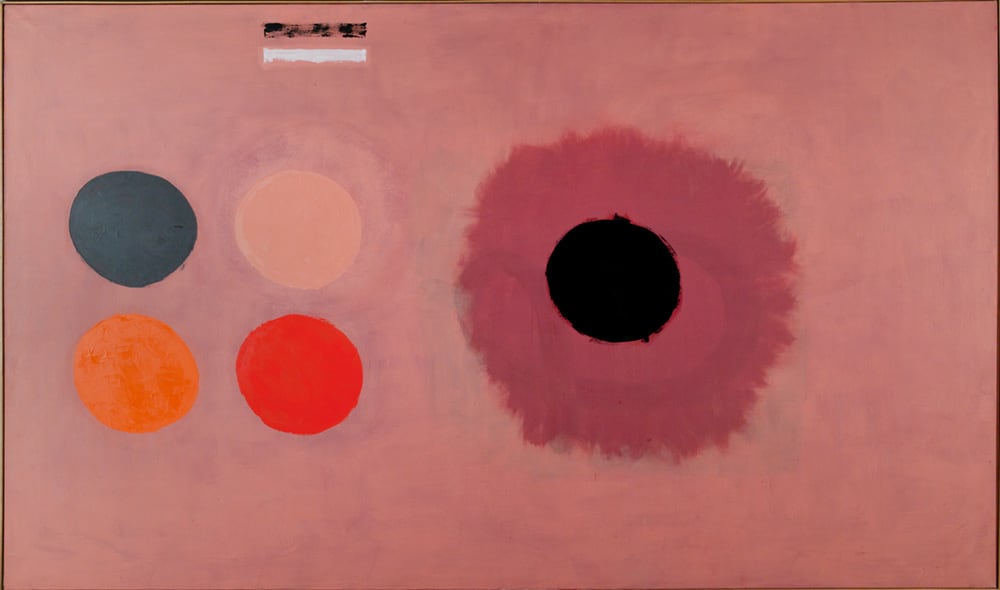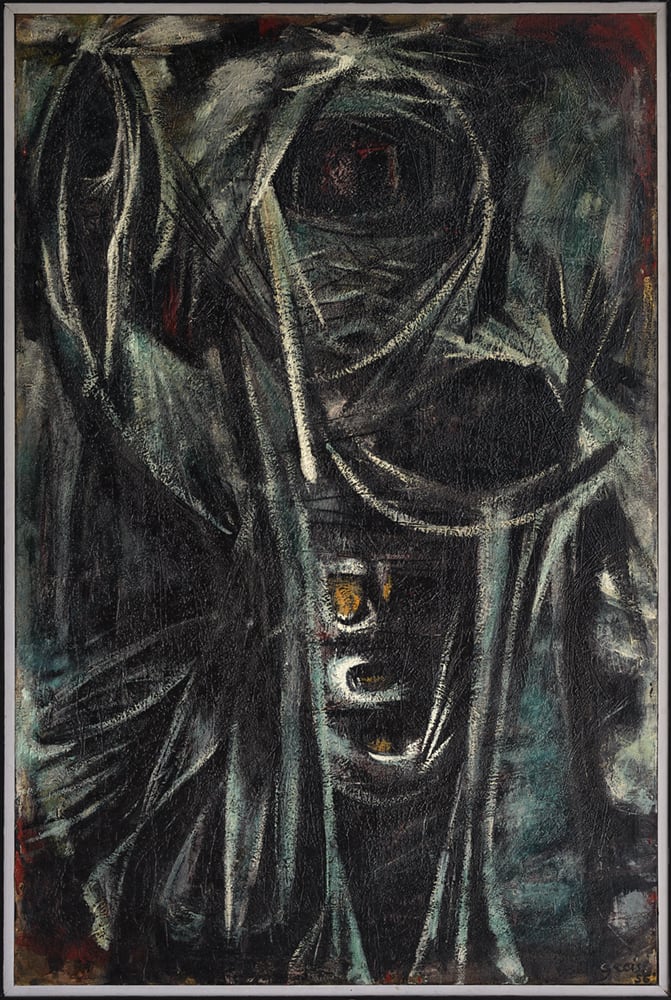The collection
What artworks will be exhibited?
In addition to loaned items from museums and private individuals from all over the world, the Reinhard Ernst Collection with over 860 paintings and sculptures will form the basis of future exhibitions. The main focus of the collection is on abstract German post-war art, abstract Japanese art (primarily of the Gutai group) and abstract American expressionism. Here is a brief look at some of the examples, which we will update on an ongoing basis.
A look at the collection
Richard Diebenkorn, Albuquerque #7
The Reinhard Ernst Collection also includes the work Albuquerque #7 by the painter Richard Diebenkorn. He began his studies at Stanford University in 1940 and initially painted very realistic pictures – influenced by artists such as Edward Hopper.
He subsequently also studied at the University of California and at the California School of Fine Arts after his military service in 1946 – a college in San Francisco, which became a centre of free artistic creativity away from traditional methods after World War II. The impressions Diebenkorn gathered during these years inspired him profoundly and led to a change in his style.
The extent to which Diebenkorn turned towards abstract expressionism can be seen in the Albuquerque Series. The artist lived with his family in Albuquerque, New Mexico from 1950 to 1952. This is where he created more than 40 oil paintings, which placed Richard Diebenkorn in the focus of the avantgarde scene. This period in the desert highlands was an especially productive and artistically fruitful stage in Diebenkorn’s work. He was subsequently considered the leading abstract expressionist on the US west coast.

His composition of the almost two-metre high painting is divided into four horizontal sections, which are derived from the colours of New Mexico’s landscape: black, dark red, pastel green and anthracite. The artist collected his perceptions of his immediate surroundings and combined them in a rectangular aspect ratio. Individual areas were overpainted, colour sequences overlap. Abstracted, calligraphic shapes found their place in the most prominent image area and are demarcated by black contours. Albuquerque #7 is among the most vividly coloured works in the series.
Richard Diebenkorn died in Berkeley, California in 1993 at the age of 70. In his obituary, the New York Times described him as “a leading American artist of the post-war period, whose deeply lyrical abstractions evoke memories of the shimmering light and wide-open spaces of California”.
A look at the collection
Shōzō Shimamoto, Palazzo Ducale 11
The oeuvres that can be found in the Reinhard Ernst Collection also include several works of the Japanese Gutai group. This community of artists was formed in the 1950s, when Japan was undergoing great socio-political change. Its young members explored new, radical forms of expression through a combination of performance, painting, installation and theatre. Many were influenced by their European and American contemporaries, such as Jackson Pollock and the European Informel school. The Gutai Group achieved international recognition and its art has been and is still exhibited worldwide.
The paintings were created based on very unusual methods. Kazuo Shiraga painted with his feet, Akira Kanayama with a remote-controlled car, Yasuo Sumi with an abacus. The process was seen as just as important as the result. Shōzō Shimamoto (1928–2013), a cofounder of the Gutai Group, also looked for ways to explore artistic freedom. With his bottle crash technique, he threw bottles full of colourful paint on to laid-out lengths of material. A rare black and white photograph by Kiyoji Otsuji from 1956 – which is also included in the Reinhard Ernst Collection – shows the then 28-year-old Shimamoto practising his art. On closer inspection, you can still identify individual shards of broken glass in the unsettling abstract colour structures.

One of the works created in this experimental manner entitled Palazzo Ducale 11 from 2008 is part of the Reinhard Ernst Collection. The painting has this title because it was created as part of an art performance by Shōzō Shimamoto in the historic Palazzo Ducale in Genoa. Shōzō Shimamoto’s art is included in the collections of renowned galleries, such as the Tate Gallery in London, the Museum of Contemporary Art in Tokyo or the Galleria Nazionale d’Arte Moderna in Rome.


